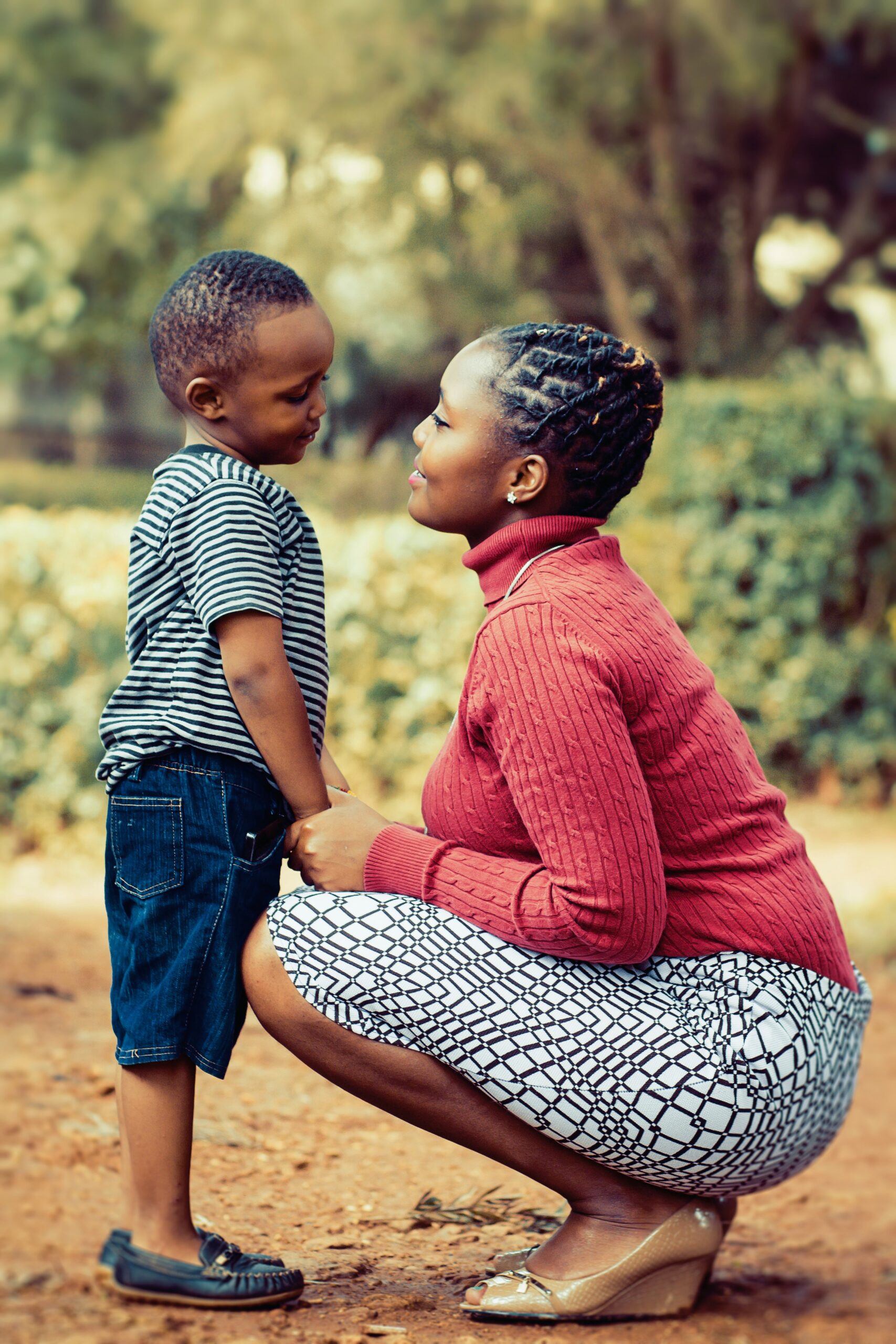
Photo Courtesy: Emma Bauso & Pexels
If you’ve been on the Internet at all recently, you’ve probably heard about attachment styles. They’ve become all the rage and as a clinician, I smile at this. I’m all about empowering others to better understand themselves and how they show up in relationships. Conversation around attachment has boomed, in part, I believe because the topic resonates with readers. We all want to feel more passion, connection and intimacy in our relationships. In this article, you’ll get a clearer view on what attachment styles are and how better understanding your own can lead to more fulfilling and connected relationships.
Brief History on Attachment Styles
If we’re going to discuss attachment, it’s first important to rewind a little to gain a more solid grasp of how this theory became so mainstream. Attachment theory was developed by John Bowlby and Mary Ainsworth in the 1950s. Their work is most notably cited from their Strange Situation experiment in the 1960s. In this lab experiment, Mary Ainsworth observed children’s reactions to having their mother leave them, while also introducing a stranger into the lab setting. Through her observations, she determined that there are four distinct attachment patterns that the children in the experiment displayed.
- Secure Attachment: Secure children were observed to display some distress when their mothers left. They were interested in the stranger only when the mother was present, and sought connection once their mothers returned. Secure children used their mothers as a secure base for exploration.
- Anxious Attachment (also referred to as Preoccupied in modern terms): Anxious-preoccupied children had intense distress when their mothers left and were fearful of the stranger. They did not seek connection with the stranger when their mothers returned. Anxious-preoccupied children were observed to cry more and were less willing to explore.
- Avoidant Attachment (also referred to as Dismissive in modern terms): Avoidant-dismissive children were observed to have no distress when their mother left. They were comfortable playing with the stranger with or without their mother present, and did not show any reaction to their mother returning. Avoidant-dismissive children were comforted equally by the stranger and their mother.
- Disorganized Attachment: (also referred to as Fearful-Avoidant in modern terms): Disorganized children made up a small portion of the children observed in the experiment. Their behaviors did not meet criteria of any of the above categories, but were observed to be inconsistent in their responses. Sometimes they wanted connection and other times rejected it. At the time of the experiment, these children were hypothesized to be Disorganized due to neglect or abuse from their caregivers.
How Childhood Influences Adult Attachment Styles
So, what does this all mean for how we show up in our adult relationships?
Well, it is undeniable that our relationships with our early caregivers influence our experience of security in our adult relationships. The relationships with our early caregivers lay the foundation for our concept of relationships moving forward. The tricky thing about this is that if we experienced insecurity as a child, the impact this had on us is often built into the framework of our relationships, but also our experience of the world. Bowlby referred to this as our “internal working model.”
- If our caregivers provided security, our general internal working model of relationships and the world will also be one of security, trust and consistency.
- If our caregivers were inconsistent with their attention, care, and nurture and we developed an insecure internal working model, this will lead us to having a general insecure (either anxious or avoidant) perception of relationships and the world.
For my intellectuals out there, this internal working model is not one we can think ourselves through. It is so foundational to who we are as humans, that no amount of thinking or analyzing will help us heal the wounds that an insecure attachment created. This is what therapy is for!
You might be curious about what your attachment style was as a child. When I started learning about Attachment Theory, I flooded my own mother with questions about how I would respond when she left me alone as a child. It seems that I was mostly securely attached as an infant and toddler. This was confusing to me, because for most of my adulthood, I have identified much more as a (recovering) anxious-preoccupied than as a secure attachment.
What became clear was that despite my early attachment being mostly secure, events that later occurred with my own caregivers influenced my attachment style to be less than secure. Though it wasn’t the case in my journey, it would have been highly likely for me to pick an avoidant partner (Anxious and avoidants are drawn to each other. More on that in a later blog.) and continue to perpetuate the insecurity from having an anxious attachment.

Photo Courtesy: Nicholas Githiri & Pexels
Identifying Your Attachment Style
So how do you know what your style is as an adult? Here are some things to keep in mind.
You might be Secure if:
- Separation from your partner does not breed anxiety or relief, but is rather neutral.
- You feel free and capable to express emotions in relationships.
- You are able to maintain your own sense of individuality in relationships.
- You are comfortable with intimacy as well as being alone.
- You are able to leave relationships that are unsatisfying, abusive, or unhealthy.
- You tend to have a general positive view of self, others and relationships as a whole.
Anxious-Preoccupied is likely if:
- You need persistent reassurance in relationships.
- You only feel as secure about your partner as your last interaction. (If it was positive, you feel okay; if it was negative, you are anxious.)
- You feel worried that you are more invested in your relationships than others.
- You are anxious that any argument will lead to a breakup.
- You tend to date partners that are emotionally unavailable.
- You are preoccupied by thoughts about your relationship (may hyper-fixate on texts, ruminate about whether your partner is mad or upset with you).
You may be Avoidant-Dismissive if:
- You desire relationships but tend to be distant when partners become too close.
- You have unrealistically high standards and when someone doesn’t meet them, you move on.
- You are hyper-independent and autonomous.
- You have beliefs that relying on others means you are weak or incapable.
- You tend to prioritize your alone time and struggle to understand your partner’s desire for quality time.
- You might be described by partners as closed off, unwilling to be vulnerable, disconnected.
As far as Disorganizeds aka Fearful-Avoidants go:
- You have a hard time managing closeness and distance in relationship.
- You have a general hard time regulating your emotions.
- You have deeply held negative beliefs related to trusting others.
- You generally avoid deeply connected relationships as the intimacy related to this is too scary and overwhelming to your nervous system.
Moving Forward
How can we use this information to get more of what we truly want out of relationships? Here are some things to consider: The first step is awareness. Being able to identify with one of the attachment styles gives you more self-awareness. This can be critical in empowering your ability to navigate and create the type of relationships you truly desire.
Next, if you identify as more anxious-preoccupied, this can help you to be more mindful of the partners you pick. Your goal is really two parts: 1) to seek partners who are securely attached and 2) to work on managing the anxiety that comes up in your relationships. That second part is a great therapeutic goal, if you’re having a hard time with it.
If you identify as more avoidant-dismissive, this can allow you to recognize that you DO actually want closeness and intimacy, but the very opportunity for that is what causes you to disconnect. Your goal is to 1) seek partners who are also securely attached and 2) learn to recognize your tendency to leave (either physically or emotionally) when relationships become too vulnerable for your liking.
If you feel more like you’re more of the fearful-avoidant style, your goals are similar to the other styles. Prioritizing a securely attached partner is helpful, but as the original research indicates, this attachment style is usually indicative of neglect, abuse, and trauma. Therefore, finding a therapist that you trust – who can be a secure attachment figure for you – is optimal for your healing.
Closing
Before I let you go, I have one more closing thought.
If you identified with any of the insecure attachment styles, it is important to note that these remain pretty stable throughout life, if there isn’t some type of intervention.
That intervention I speak of is usually through the types of relationships we develop and maintain. After all, relationships are where we first experienced attachment. If we are insecurely attached and continue in relationships with partners who are also insecurely attached, nothing will change. Not only will we remain insecure, but we will also continue to feel like something is missing in our relationships.
In addition to finding a secure partner, the relationship we have with our therapist is also a critical opportunity (and intervention) to work on moving from an insecure attachment to a more secure attachment. So, take this as my nod to take the brave step and start your therapeutic journey today!
Oaks Counseling Associates offers a safe and supportive environment as well as the guidance of qualified therapists. For more information, visit our website and request an appointment.
 This blog post was written by Cady Parliman, MSW, Licensed Master Social Worker, EMDR Trained.
This blog post was written by Cady Parliman, MSW, Licensed Master Social Worker, EMDR Trained.
Parliman is supervised by Jennifer Slaughter, LCSW-s, EMDR Trained, SEP Lic# 37624.






